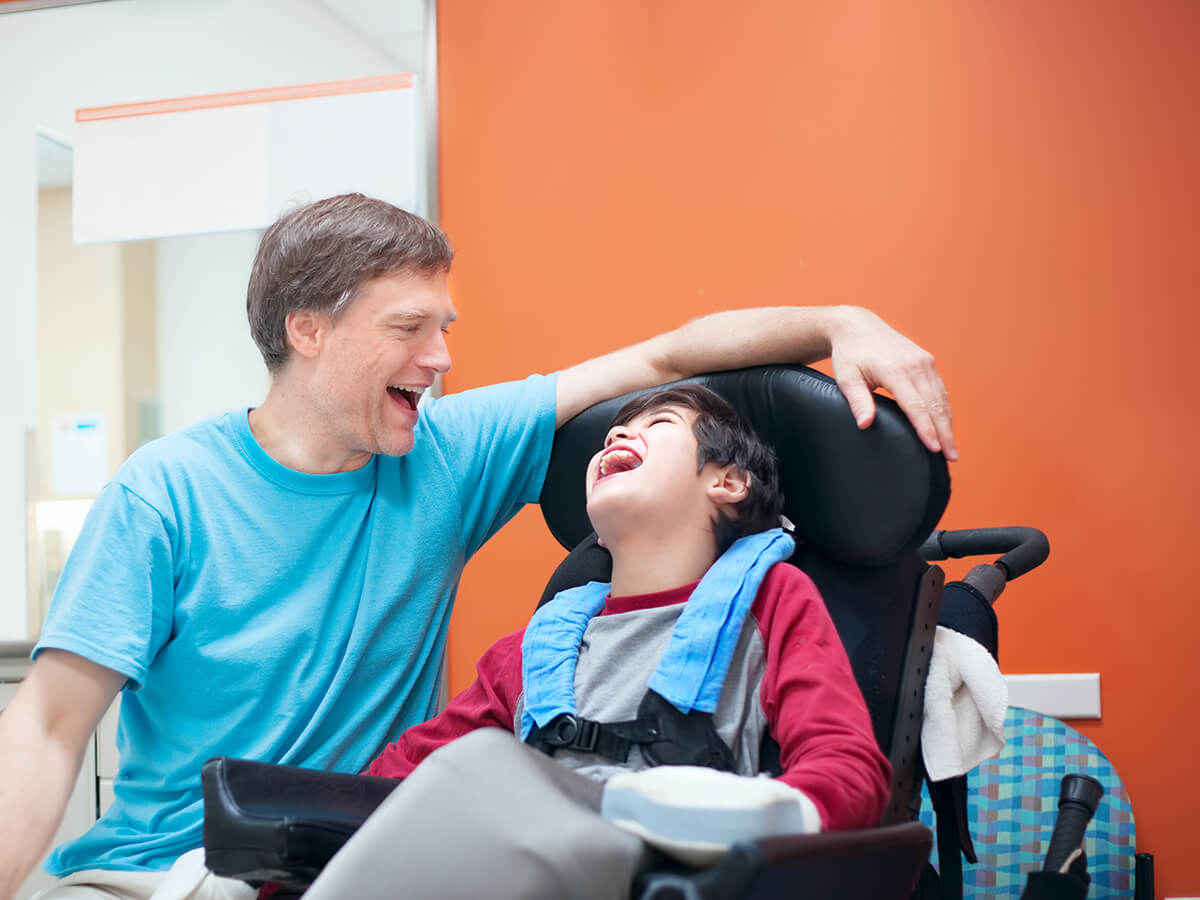Podcast: Download
Subscribe: RSS
Guest post by Brittany Bayley
As much as we may be hesitant to admit it, being around others with needs different from our own can be uncomfortable. You may wonder what is appropriate to say, what questions you should avoid, and if you should jump in and help (or let them work a situation out on their own.)
But, after several years of working at a therapeutic center dedicated to individuals with special needs, I learned first hand how to respectfully communicate with someone with a physical disability. Here are five easy to remember tips so that your next encounter can lead to a budding friendship.
Look them in the eye
This tip is number one for a reason! It’s by far one of the key ways to respectfully communicate… with anyone! Those with a wheelchair, walker, or assistive device may experience people looking at their assistive device more often than their eyes.
When you first meet someone with a physical disability, find their eye line and meet it. Then, as much as possible during your conversation, hold that eye contact. It’s natural to notice (and even be curious about) the device they have, but try to remember that it’s just a tool. I think of it like this: while I may have gel tennis shoe inserts that help me comfortably run, they may have mobility aids that help them comfortably walk. We all need some assistance from time to time, and making eye-to-eye rather than eye-to-device contact acknowledges that.
Speak directly to them
Those with physical disabilities often experience being spoken about rather than spoken to. This happens particularly if they have an aid with them, or are using a wheelchair that puts them below the natural line of sight. Their peers are not maliciously leaving them out, they just may be uncomfortable or unsure of what to say.
When you encounter someone using the assistance of an aid, know that aids simply help their partners interact with a world built for people with different abilities. That means an aid is there to help someone get on and off the bus with their wheelchair quickly, not answer whether or not they like pepperoni pizza. Simply have your conversation as if the aid was not there (you can ask them how they are, of course, but ultimately they are not there for chit-chat). Speak directly to your new friend… they know how they’re feeling or and are in a position to answer for themselves.
Find common conversational ground
Now that you have established eye contact, and exchanged pleasantries with an aid (if present), get to know your new friend! Communicating with them should be like communicating with anyone else. You can ask if they are having a good time, where they got their cool shirt, or if the appetizers are any good.
Finding common conversational ground is something we do in our day to day life, but it can be easily forgotten when communicating with someone who looks or acts differently than us. Finding common ground (like loving those spring rolls they’re passing around) can put both parties at ease and lead to more meaningful conversations.
Assume they can get by on their own
When people interact with someone with a physical disability, they have the tendency to want to help. While that desire comes from a loving place, it’s often unnecessary and can lead to awkward situations.
Your new friend has likely already lived with their physical disability for an extended period of time. They have learned how to get by on their own, and when they need to ask for assistance. While they may do things unconventionally (like using their cane to pull a door open), they have had to learn to navigate this world. Of course, it can be nice to hold the door open for someone! But for the most part, assume those with a physical disability can accomplish things on their own. If you witness something that leads you to believe assistance is truly needed, ask, “Is there anything I can do to help you?”. Asking is respectful; it the gives them the opportunity to decline.
Don’t ignore the elephant in the room
Here’s the deal: Someone with a physical disability knows they have it. They experience daily that their favorite restaurant doesn’t have a wheelchair ramp, light switches are always a bit too high, and the sidewalk on main street is partially bumpy.
So commenting on the multi-colored tennis balls on their walker, or the personalized plate on their wheelchair won’t suddenly remind them of their situation. Ignoring their physical disability is ignoring a large part of their life. So if you see someone with hot-pink or themed wheelchair gloves, don’t be afraid to comment on them! They already know they have them on, and may love to talk about them!
Respectfully communicating with someone with a disability takes some practice. Our natural instincts may work against us as we debate the correct topic to bring up, and if we should involve their aid or not. However, if you’re willing to put yourself in an unfamiliar situation, you will be blessed with new friendships and powerful conversation. And, after awhile, you won’t think twice about meeting someone’s eyes and commenting on their washi tape-wrapped mobility aids.
About the author: one of Brittany’s first jobs out of college was working with individuals with mental and physical impairments. Today, she lives in Orlando, Florida, and blogs on her website www.brittanybayley.com.









0 Comments